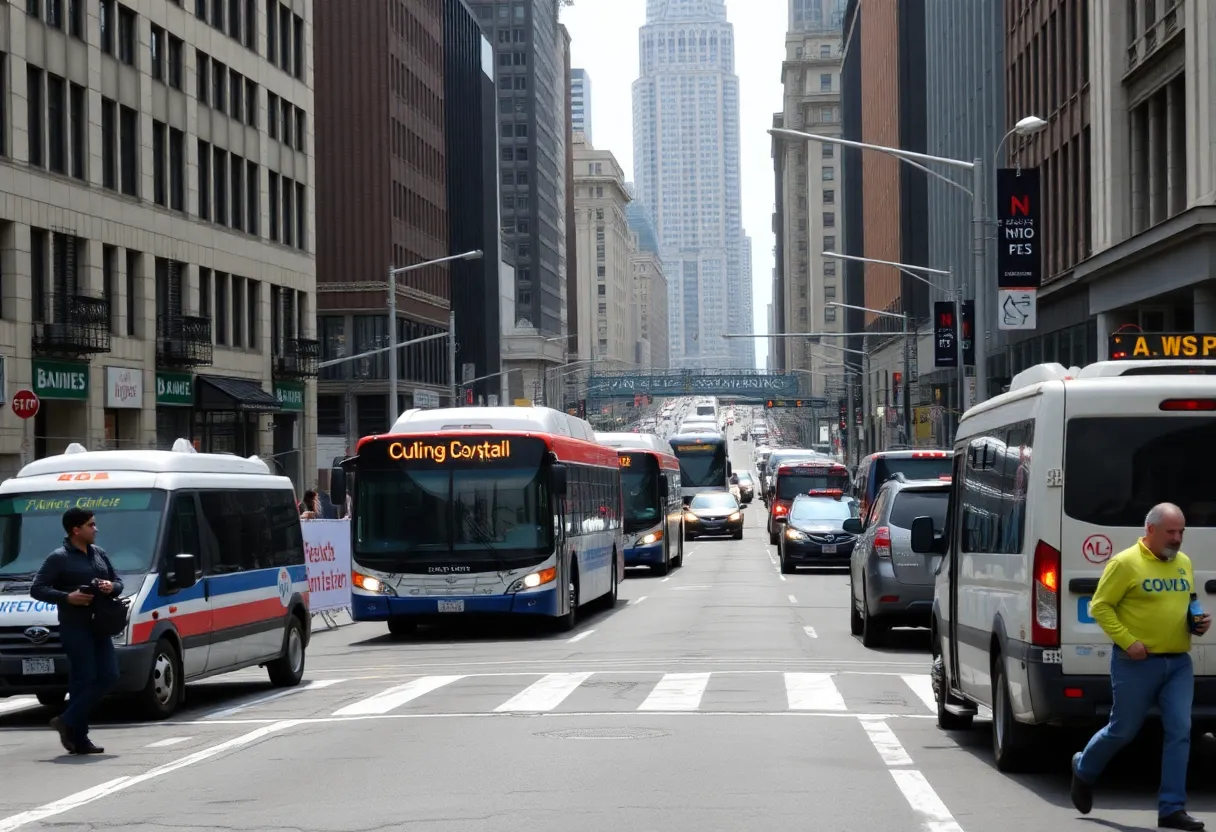News Summary
New York City’s congestion pricing program, launched on January 5, has achieved significant results, including a marked reduction in vehicles entering Manhattan and increased bus speeds. Traffic congestion levels have decreased by 12%, leading to enhanced traffic flow and safety for commuters. The initiative, which generates revenue for public transit, has reportedly produced $100 million in its initial months. However, business reactions are mixed, and concerns remain regarding its impact on lower-income drivers. Monitoring will continue to evaluate long-term effects of this program.
New York City has seen promising results from its congestion pricing program that began on January 5, charging most vehicles $9 to enter Manhattan from 60th Street to the Battery. The initiative, aimed at alleviating traffic congestion and generating revenue for public transit upgrades, has successfully decreased the number of vehicles entering the congested area by approximately 76,000 vehicles daily.
Four months into the program, April traffic was measured to show a decline of about 2.3 million vehicles compared to pre-implementation trends, representing a 12% reduction in congestion levels. The decrease in vehicle numbers has led to tangible improvements, including a 15% increase in traffic speeds in the congestion zone within the first two months, particularly benefiting evening commuters.
In addition to reduced congestion, the Metropolitan Transportation Authority (MTA) reported a 3.2% increase in bus speeds from January to March when compared to the previous year, which has positively affected several bus routes in and out of the busy zone. Furthermore, vehicle-related crashes resulting in injuries have decreased by 14%, indicating that fewer cars on the road may be contributing to a safer environment for both drivers and pedestrians.
Noise pollution has also seen significant improvements, with complaints regarding excessive honking dropping by nearly 50%. This reduction in noise has enhanced the quality of life for residents within the congestion zone as well. Additionally, public transit use has risen since the program’s inception, supporting the city’s intention to encourage more sustainable transportation options.
As the program has generated approximately $100 million in revenue for public transit initiatives during its initial months, the city anticipates a continuation of this financial support. The funds generated could play a crucial role in improving and expanding mass transit options throughout New York City.
Despite these positive metrics, public reaction has been mixed. A New York Times survey assessing 40 businesses along Bleecker Street indicated that 25 reported no significant effects from the congestion pricing, while 10 claimed the toll had negatively impacted their business. Conversely, 4 businesses said the program has been beneficial. Overall, it seems the majority of New Yorkers are beginning to adapt to the new pricing structure.
Concerns regarding the impact of congestion pricing on lower-income drivers persist, although the city has provisions in place offering discounts for qualifying individuals. Early polling suggested low support for the initiative; however, recent data indicates an increase in public acceptance, reflecting a gradual shift in attitudes as residents become more accustomed to its implementation.
As the program continues to unfold, monitoring will be essential to gauge long-term outcomes on traffic patterns, business health, and overall community well-being. City officials are committed to closely observing these effects to ensure that improvements continue and that the benefits are distributed equitably among all residents.
Deeper Dive: News & Info About This Topic
HERE Resources
Small Business Surge in New York City Post-Pandemic
New York State Increases Payroll Tax and Installs Speed Cameras
Perfect Moving & Storage Offers 15% Discount on Weekend Moves
New York State Approves $68.4 Billion M.T.A. Capital Plan
NYC Department of Education Suspends Mass Communications
New York State Approves $68.4 Billion MTA Capital Plan
New York Defends Congestion Pricing Amid Federal Pushback
Proposed Rent Increases Ignite Controversy in NYC
Class-Action Lawsuit Against Paramount Global and CBS Interactive
New York State Increases Payroll Mobility Tax to Fund MTA
Additional Resources
- The New York Times: Congestion Pricing Insights
- Wikipedia: Congestion Pricing
- The New York Times: Businesses Adapting to Congestion Pricing
- Google Search: Congestion Pricing New York City
- Curbed: 100 Days of Congestion Pricing Results
- Encyclopedia Britannica: Congestion Pricing
- Bloomberg: NYC Congestion Toll Revenue
- Google News: Congestion Pricing New York








